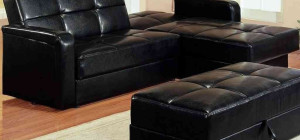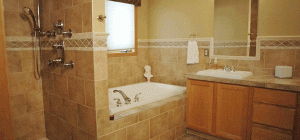 Water damage from leaks in your facility can be a significant blow. It won’t just cost you a lot to address the issue but can also shut (or at least slow) down business operations.
Water damage from leaks in your facility can be a significant blow. It won’t just cost you a lot to address the issue but can also shut (or at least slow) down business operations.
Whether it’s losing records and equipment, sending employees home for the cleanup, or managing the distraction, water damage can affect your business in more ways than you think.
Here are some tips you can use to detect and prevent water damage in your facility from happening.
1. Listen for the water hammer effect
The water hammer effect happens when plumbing isn’t properly installed. This effect occurs when pipes rattle against the walls. Listen for it by halting the momentum of water abruptly. How? Just off a faucet quickly. While the hammer effect doesn’t cause any leaks, it may wear your pipes down over time. If you catch it quickly, you’ll end up saving a lot of bucks down the line.
2. Review faulty construction
From primary water line failure to windows to roof leaks, the dangers here are varied. Besides getting in touch with your contractor, there’s no way you can stop it. However, with a leak detection system in place, you can reduce some of the associated risks.
3. Monitor improperly installed windows
Similar to a leaking roof, preventing this on your own wouldn’t be possible. However, monitoring and detecting them well before they become a problem can help.
4. Look for wet walls
If there’s one biggest vulnerability in your facility, it’s a wet wall. These walls carry your main water lines, draining to most bathrooms, kitchens, and other wet rooms. Remember one thing, if a wet wall becomes water damaged, things can go downhill pretty quickly. Plus, the effects of physical damage, water hammer, and freezing will grow exponentially. So, keep an eye out for wet walls. In addition, plan where you’ll be placing your water-bearing equipment because icemakers can be troublesome.
5. Don’t ignore small drips and leaky roofs
A faulty roof means you’ll have a leak problem – it’s common sense. While you can’t avoid it, your leak detection system can stop it from turning into a disaster.
6. Place your drains strategically
If your drains don’t drain, they’ll not just be harmful to the room they’re in but for the adjacent rooms as well. Remember, place your drains after surveying your most critical facilities and rooms. Also, don’t forget to consider what might be dripping or seeping into them.
7. Keep your sprinklers in check
Sprinklers pose a lot of danger. While repairs made of overhead fire suppression systems aren’t as frequent as other repairs when this does happen, sprinkler heads may be left uncapped. This leads to an open water line – something that can spew a significant amount of water quite swiftly. Take a look at where your sprinklers are, and don’t forget to maintain them.
8. Look for water supply or return lines that are at risk
Your pipes may encounter a range of risks, for example, physical damage, age, water hammer, freezing, etc. Understand the environment surrounding your pipes and think about what dangers exist. For instance, inspect the pipes that go into the overhead sprinklers – they are a weak spot in your water system and are quite prone to damage.
9. Inspect freezing or failing pipes
Frozen fluids expand with significant force, enough to crack copper, plastic, and even steel pipes. If this frozen water starts melting, the resulting leaks won’t just damage the fittings and pipes but will also harm the walls around them. This isn’t true for just external pipes; every pipe runs the risk of freezing if, for example, your heating system goes down.
Every item on this list is a potential threat, something that you must always be on the lookout for. If water damage starts to build up within these spots, you’ll end up facing a big problem unless you detect it early. It’s important to understand that a single, long pipe isn’t enough to serve any facility, and anywhere two or more pipes meet, leakage can’t be ruled out. With time, wear and tear may cause deterioration, breaking the seals too. If they’re not checked on time, small leaks can turn into big leaks, causing severe damage.
What next?
Once you know what you’re looking for, just ensure you’re looking for these problematic areas throughout your facility. Go through your weak spots and answer the following questions:
- What equipment is specifically susceptible to water/chemical damage?
- Where in your facility can water damage cause the greatest downtime or other problems?
Once you do this, imagine your building in 3D, and answer the following questions:
- What seems visibly hidden but can be accessed by insidious little water streams?
- Do you have suspended ceilings or raised floors?
- What is above/below your most crucial areas, for example, your data center?
Obtain your building’s map and highlight every spot you think must have some kind of leak detection in place. If you think you won’t have enough resources to cover all of these spots, identify spots that are susceptible to more damage, and finally, answer these questions:
- Is the potential for fluid damage a general threat or just isolated to a single spot?
- What pieces of equipment or rooms are crucial to the uptime of your facility?
This will help you choose the best leak detection system for your facility.
PermAlert’s leak detection system is ideal for a range of industrial environments
PermAlert’s leak detection system comprises control panels, resettable & fast-acting probes, sensor cables, and full-fledged software. These units can be configured to suit an array of applications, both complex and simple, while allowing for future expansion.
PermAlert’s systems are reliable in use, rugged in design, and simple to operate.
Call them now for more information about their leak detection products.







